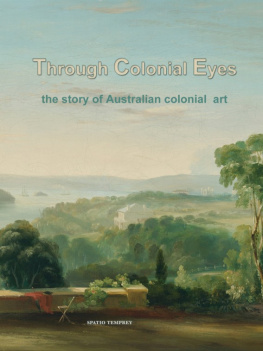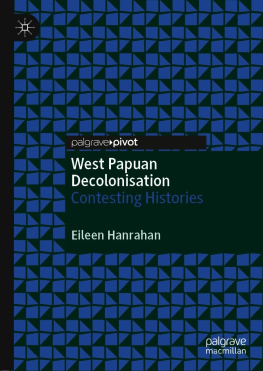Rebellion in Laos
Rebellion in Laos
Peasant and Politics in a Colonial Backwater
Geoffrey C. Gunn
First published 1990 by Westview Press
Published 2019 by Routledge
52 Vanderbilt Avenue, New York, NY 10017
2 Park Square, Milton Park, Abingdon, Oxon OX14 4RN
Routledge is an imprint of the Taylor & Francis Group, an informa business
Copyright 1990 by Taylor & Francis
All rights reserved. No part of this book may be reprinted or reproduced or utilised in any form or by any electronic, mechanical, or other means, now known or hereafter invented, including photocopying and recording, or in any information storage or retrieval system, without permission in writing from the publishers.
Notice:
Product or corporate names may be trademarks or registered trademarks, and are used only for identification and explanation without intent to infringe.
Library of Congress Cataloging-in-Publication Data
Gunn, Geoffrey C.
Rebellion in Laos: peasant and politics in a colonial backwater /
Geoffrey C. Gunn
p. cm.
ISBN 0-8133-8027-8
1. LaosPolitics and government. 2. PeasantryLaosPolitical
activity. 3. MinoritiesLaosPolitical activity. 4. Revolutions
Laos. I. Title.
DS555.7.G86 1990
959.4dc20 90-12385
CIP
ISBN 13: 978-0-367-28515-9 (hbk)
| Tables |
| Maps |
| Map 1 The debloquement or opening up of Laos |
| Map 2 Indochina by ethnicity (Indochine Carte des Races) |
| Map 3 Montagnard rebel zones in southern Laos, 1910s |
| Map 4 Military deployments during the Batchai rebellion, 1920 |
ban (L) village
bao (L) entourage
boun (L) fete
chaufa (H) Messiah
chau (V) political division
chaomuong (L) lord
chaosivit (L) lord of lives
Hosenam (Senam) Luong (L) King's Council
Isan (L) northeast (of Thailand)
khene(L) flute
khoueng (L) province
kong (L) district
kounan (L) intendant for the preparation of festivals
kha (L) slave
khabot (L&K) traitor/rebels
lam (Kouang, haou, van (L) tribal intermediary
Lao Loum (L) lowland Lao
moi (V) slave
muong (L) circumscription (province)
malalecs (L) partisans
naa(L) ricefields
nong hoi (V) partisans
phi (L) spirit
phoa thay (M) king
phou mountain
phu mi boun (L) men with merit
pia measure (of opium)
phnong (K) spirit
pongsawadan (L) Lao Royal chronicles
phuwiset (L) man claiming supernatural powers
ray (L) swidden
sou khoun (baci) (L) calling of spirits
suan (L) kitchen gardens
sala (L) rest house
sadet (L) King
sin (L) Lao skirt
sakdina (T) feudal
tassene (L) canton
that (L) reliquary
tahois (L) partisans
wat (L) temple
(L) = Lao
(V) = Vietnamese
(T) = Thai
(K) = Khmer
(H) = Hmong
A study in historical anthropology, this work focusses on the world historical incorporation of Laos into a colonial capitalist system of surplus accumulation. In so doing, new light is brought to bear upon the non-rebellious and, especially, rebellious responses of the majority (Lao) and minority (montagnard) population of that country, at least as determined by a scrutiny of largely archival-based sources. The approach taken is to combine a general world systems analysis with a concern for the non-economic, moral and ideological forms of colonial and "feudal" domination.
In we turn to the minority revolts which sundered the paix francais for the duration of the colonial epoch in Laos. While both the revolts of the Hmong of northern Laos and the Kha of southern Laos carry strong overtones of millenarianism, the major leitmotif that connected the different groups through the decades, it is argued, was the anti-colonial, anti-tax and anti-corvee dimensions of their protest.
The importance of our findings, then, reveal the degree to which the minority population of Laos was "prepared" during the colonial epoch by its experience of capitalism, however incipient, for the revolutionary sequels of the late 1940s down to "liberation" in 1975.
Geoffrey C. Gunn
My thanks go out to those at Monash University who read or commented upon this work as a whole, (David Chandler) or fragments thereof (Ben Kiernan). Likewise I am indebted to Herbert Feith, not only for suffering my participation in his course "Centre-Periphery", but pushing me to greater theoretical self-criticism. Undoubtedly, as well, my understanding of political anthropology was enriched by the participation in this circle of Wan Zawawi Ibrahim. In France, I received encouragement from Christian Taillard. Special thanks to Kelvin Rowley and Kevin Hewison for their respective searing and insightful theoretical criticisms of the whole manuscript.
In Bangkok, I also wish to thank Khun Suk Soongsawang of Duang Kamol Book House for encouragement and support. At Westview Press, I acknowledge the keen editorial assistance of Ellen E. Williams.
Finally, thanks to my wife, Chieko, and son, Kenji, fellow travellers to Laos.
Parts of this manuscript have been published in the journal of Siam Society; Vol.73,1985, Vol.74,1986 and Vol.77,1989, the Bulletin of Concerned Asian Scholars Vol. 19, No.3, July-September, 1987 and Sojourn; Vol.3, No.2, August 1985. I am, accordingly, indebted to the editors of these Journals for permission to reproduce material to which they hold copyright.
No longer is it possible to take seriously the view that the peasant is an "object of history" a form of social life over which historical changes pass but which contributes nothing to the impetus of these changes.
(Barrington Moore Jr. 1966:453)
The history of these [African] peasant societies is that of an uninterrupted series of revolts against the domination of capital: resistance to conquest, to administrative machinery, to its forced requirements (corvees) and its taxes, massive uprisings whenever the peasants feel the ability of urban capital to operate in the countryside is weakening....
(Samir Amin 1977:152)
This book is a study of two interconnected themes. First, the incorporation of Laos into a colonial-capitalist system of surplus accumulation; and, second, the rebellious and non-rebellious responses of the majority and, particularly, the minority peasantry of that country to fundamental changes in their moral, social, political and economic order. Both areas of exploration, we will show, are explainable with reference to the general phenomenon of world-historical expansion.
Thematically, the subject of this work is that of a tax engendered revolt by the minority montagnard population of French Laos who were thrust with dramatic speed into the colonial capitalist orbit. The various responses of these people to the confrontation with outsiders, was not necessarily a concomitant of total backwardness nor messianism although this was also involved but arose in opposition to exploitative capitalist social relations, displacement and disarticulation. We will further argue that while class relations did not develop in Laos or especially in the montagnard environment in a way analogous to that of the commercial and industrial enclaves of Indochina, namely Tonkin and Cochinchina, the overall dissolution effect engendered by the colonial tax, corvee and prestations (labor due) system was much more dislocative of traditional social relations in this backwater than has hitherto been appreciated. The otherwise unexplained phenomenon of the majority participation of these hill people in a modern movement for social and especially national liberation under the banner of the Pathet Lao movement and under the nominal (?) urban working class leadership is brought into perspective.









